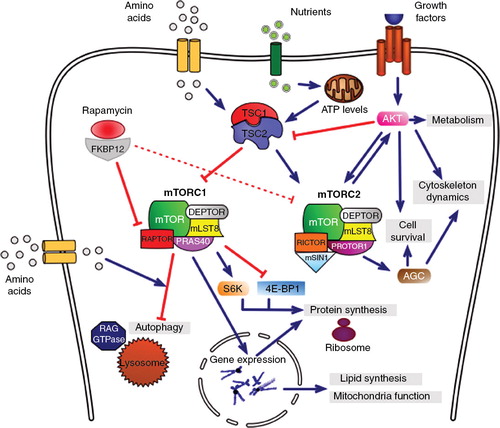Figures & data
Figure 1. The mTOR-signaling pathway. Rapamycin bound to FKBP12 intracellular receptor influences several essential cellular processes, including cell survival, metabolism and mitochondrial function, protein synthesis and autophagy, by inhibiting the mTOR activity. mTOR is a serine/threonine kinase that forms two functional complexes, mTORC1 and mTORC2, which share the catalytic subunit (mTOR) and two regulators (MLST8 and DEPTOR) but differ in other components (See text for details). The TSC1-TSC2 complex integrates the signaling produced by several nutrients, stressors and growth factors and depending on external stimuli its activity may result in direct inhibition of mTORC1 and activation of mTORC2. mTORC1 promotes protein and lipid synthesis, as well as modulating mitochondrial function, by regulating gene expression and S6K and 4E-BP1 activity. In response to amino acids, mTORC1 is recruited by RAG GTPases to lysosomal membranes, where it is activated and inhibits autophagy. mTORC2 is activated in response to growth factors and promotes the AKT pathway, which is involved in cell survival, metabolism and cytoskeletal organization.
